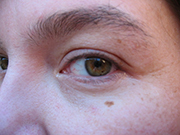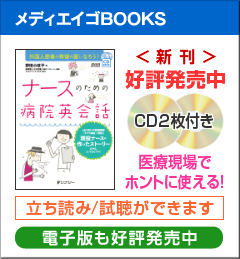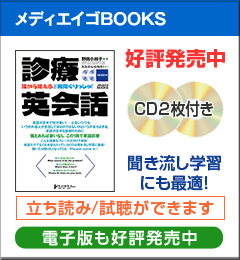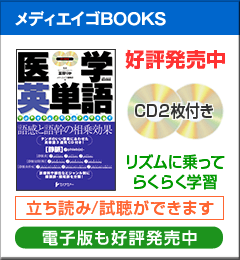
ホクロの数は若さの証拠?
Press Release from King’s College London on July 11, 2007.

(C) flickr & athene8
ホクロが多いと皮膚癌になる確率が高くなるといわれているが,悪いことばかりではなさそうだ。体のすべての細胞には,染色体の末端にテロメアと呼ばれるDNAの束がある。テロメアはさまざまな臓器の老化と関連し,年とともに短くなることがわかっている。一方,ホクロは子供の頃に現れて,中年期以降になると年とともに消えていく。この点に注目した英国の研究者が,1,800組の双子を対象にホクロとテロメアの関連について研究を行った。その結果,ホクロが多い人はテロメアが長く,老化しにくい可能性があることが明らかになった。(吉田素子)
People with large numbers of(1) moles(2) may age slower than expected, according to(3) a study from King's. Researchers(4) studied the skin and telomere(5) length (a marker(6) of biological ageing(7) found on all cells(8) in the body) of more than 1,800 twins and found that people with a high number of(9) moles had longer telomeres.
The 10 year study from the Twin Research Unit (10) was funded(11) by the Wellcome Trust(12) and is published in the July edition of Cancer Epidemiology(13) Biomarkers(14) & Prevention(15).
Moles appear in childhood and disappear from middle age(16) onwards(17). When present in large numbers(18) they can increase the risk of melanoma(19), a rare(20) form of skin cancer(21). Moles vary(22) significantly(23) in numbers and size between individuals(24). The average number of moles in people with white skin is 30 but some people may have as many as 400. Some moles may be 2mm in diameter(25) whilst(26) others are well over 5mm. The reason for such differences between people is unknown as is the function of moles. Doctors have suspected(27) that people with lots of moles may have some advantages in view of(28) the fact that moles are common in the general population(29). The Twin Research Unit has already shown in a previous(30) study on over 2,000 twins that up to 60 per cent of susceptibility to(31) moles is inherited(32).
Since moles disappear with age, scientists at the Twin Research Unit looked at the relationship(33) between the number of moles and telomere length, which is a good indicator(34) of our rate of ageing. Telomeres, which get shorter as we age, are bundles(35) of DNA found at the end of chromosomes(36) in all cells and assist in the protection, replication(37), and stabilization(38) of the chromosome ends. (Telomeres have been compared with the plastic tips on shoelaces(39) because they prevent chromosome ends from fraying(40) and sticking(41) to each other). A measure of the telomere length in white cells(42) in the blood has been found to correlate with(43) ageing in many different organs(44) such as heart, muscle(45), bones and arteries(46).
(1) 多数の (2) ホクロ (3) ~によると (4) 研究者 (5) テロメア(染色体の末端部位)
(6) マーカー(指標) (7) 生物学的老化 (8) 細胞 (9) 多数の (10) 研究部 (11) 資金提供を受けた
(12) 財団 (13) 癌の疫学 (14) バイオマーカー (15) 予防 (16) 中年期 (17) 以降 (18) 多く
(19) メラノーマ(黒色腫) (20) 珍しい (21) 皮膚癌 (22) 異なる (23) かなり (24) 個人 (25) 直径
(26) 一方(=while) (27) ~ではないかと疑ってきた (28) ~を考慮すると (29) 一般人口 (30) 以前の
(31) ~への感受性(この場合,ホクロができやすいこと) (32) 遺伝による (33) 関係 (34) 指標
(35) 束 (36) 染色体 (37) 複製 (38) 安定 (39) 靴ひも (40) ほつれること (41) くっつくこと
(42) 白血球 (43) ~と関連がある (44) 臓器,器官 (45) 筋肉 (46) 動脈


